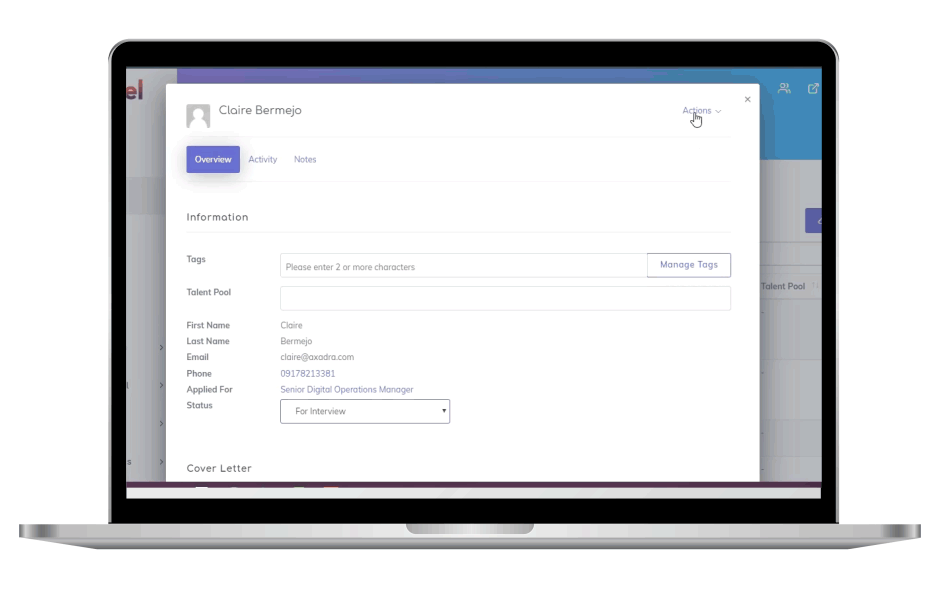Most companies are always on the quest to find top talents that can help empower their existing workforce. After all, employees are the backbone of any successful organization. Hiring great talents is crucial for businesses to grow and stay ahead of their competitors.
In today’s hyper-competitive market, it is becoming increasingly difficult to attract top talents. As a recruitment professional, you might do everything in your power to source and recruit qualified candidates. Some of the things you do might include creating well-written job descriptions, offering competitive salary, and providing a long list of benefits.
However, you should keep in mind that your efforts are not the mere basis for applicants to approach your company. Surveys have shown that 86% of applicants will instinctively stay away from an organization with a negative reputation. No matter how much you work on your employer value proposition, it will go to waste if you don’t try to improve your employer branding strategy.
What is Employer Branding?
Your organization’s branding represents your reputation as an employer. It is a collective impression made by your employees and the entire workforce regarding your company’s values, culture, and work environment. This impression is what potential candidates use to evaluate whether they want to apply for a job at your company.
Your employer branding is affected by how you market your organization to potential candidates and your existing employees. It is not merely about the products and services that you offer, but also your leadership, values, and culture.
Creating positive employer branding involves telling a compelling story that gives anyone a quick glimpse of what it’s like to work in your company. However, you should make sure to offer more than just the superficial things like a fun break room, standing desks, or free-flowing coffee. You need something that you have to build over time, such as a positive work culture, employee development opportunities, and a diverse and inclusive environment.
Why is Employer Branding Important?
Your employer branding affects every part of your recruitment process and existing workforce. So, strong employer branding can bring numerous benefits to your organization, from recruiting and retention to performance and profitability.
When potential applicants first encounter your organization on social media or job boards, one of the first things they’ll do is research your company and learn about your employer brand. With their new-found knowledge, they’ll decide if they want to be a part of your organization or pass up on the opportunity.
If you don’t work on improving your employer brand, chances are most applicants wouldn’t want to associate with your company. After all, candidates who are looking for long-term commitments look past the salary offer and basic benefits provided. They want to work in a company that aligns with their values and has a positive reputation.
Moreover, strong employer branding can also help attract top talents who are not actively looking for job opportunities but are open to new opportunities. These passive candidates make up a significant portion of the workforce, and by having a strong employer brand, you increase your chances of catching their attention and convincing them to join your organization.
Creating a strong employer branding also allows you to reduce turnover rates. When a new employee knows the company they joined, they are less likely to become unsatisfied with the culture and have an easier time adapting to their new work environment.
Building a Strong Employer Brand
Learning what employer branding is is not enough to attract qualified candidates. Depending on the current status of your reputation, you need to build an employer branding strategy to make your organization appealing to potential applicants. Here are the steps you need to take:
- Consider your organizational needs: Start by evaluating your current employer brand and identifying the areas that need improvement. This will help you tailor your strategy to fit your organization’s specific needs.
- Set your objectives: Identify what you want to achieve with your employer branding strategy, whether it’s attracting top talents, reducing turnover rates, or improving employee engagement. Make sure that the goals you set are measurable and achievable to track your progress.
- Create candidate personas: Get to know your ideal candidate and their motivations. This will help guide your employer branding strategy and ensure that you are targeting the right audience.
- Define your KPIs: Determine the key performance indicators (KPIs) you will use to measure the success of your employer branding strategy. This could include metrics such as number of applications, employee satisfaction rates, or retention rates.
- Define roles and responsibilities: Assign specific roles and responsibilities to individuals or teams within your organization to ensure that everyone is working towards the same goal.
Using Your Employer Branding Strategy
Once you’ve built a strong employer branding strategy, it’s important to use it effectively. Here are some ways you can implement your strategy and strengthen your employer brand:
- Keep everyone on the same page: Make sure that your employees are aware of your employer branding strategy and understand their role in maintaining a positive reputation.
- Prepare for common obstacles: Be prepared to face challenges in implementing your employer branding strategy, and have a plan in place to address them. Some of the most common obstacles include dealing with negative reviews or addressing employee turnover.
- Personalize employer branding materials: Tailor your employer branding materials to fit your candidate personas and make them more relatable. This could include using the right tone, focusing on specific values or benefits, or showcasing your company’s unique culture.
- Use social media: Social media is a powerful tool for showcasing your employer brand and reaching potential candidates. Use platforms like LinkedIn, Glassdoor, and Instagram to share employee testimonials, company updates, and behind-the-scenes glimpses of your workplace.
- Create a content calendar: Consistency is key when it comes to employer branding. Create a content calendar to plan and schedule your employer branding content so that you can stay on top of your messaging.
- Do A/B testing: Experiment with different messaging, visuals, and platforms to see what resonates best with your target audience. Use A/B testing to compare the performance of different versions and adjust your strategy accordingly.
- Measure your progress: Regularly track and analyze your KPIs to see how your employer branding strategy is performing. Use this data to make improvements and continue strengthening your employer brand. Using an HR applicant tracking system can be beneficial in achieving this.
- Adapt and optimize as you go: Your employer branding strategy should be a continuous process that evolves as your organization grows and changes. Continuously track and analyze your progress, and make adjustments to optimize your strategy for maximum impact.
Build a Strong Employer Brand Today
Attract top talents for your company and create a positive work culture by investing in your employer brand. With the right strategy and implementation, you can enhance your organization’s reputation, reduce turnover rates, and attract skilled candidates who are aligned with your values.
Don’t overlook the importance of employer branding – it could be the key to unlocking your organization’s success. So start building your employer branding strategy today and reap the benefits of a strong employer brand.












